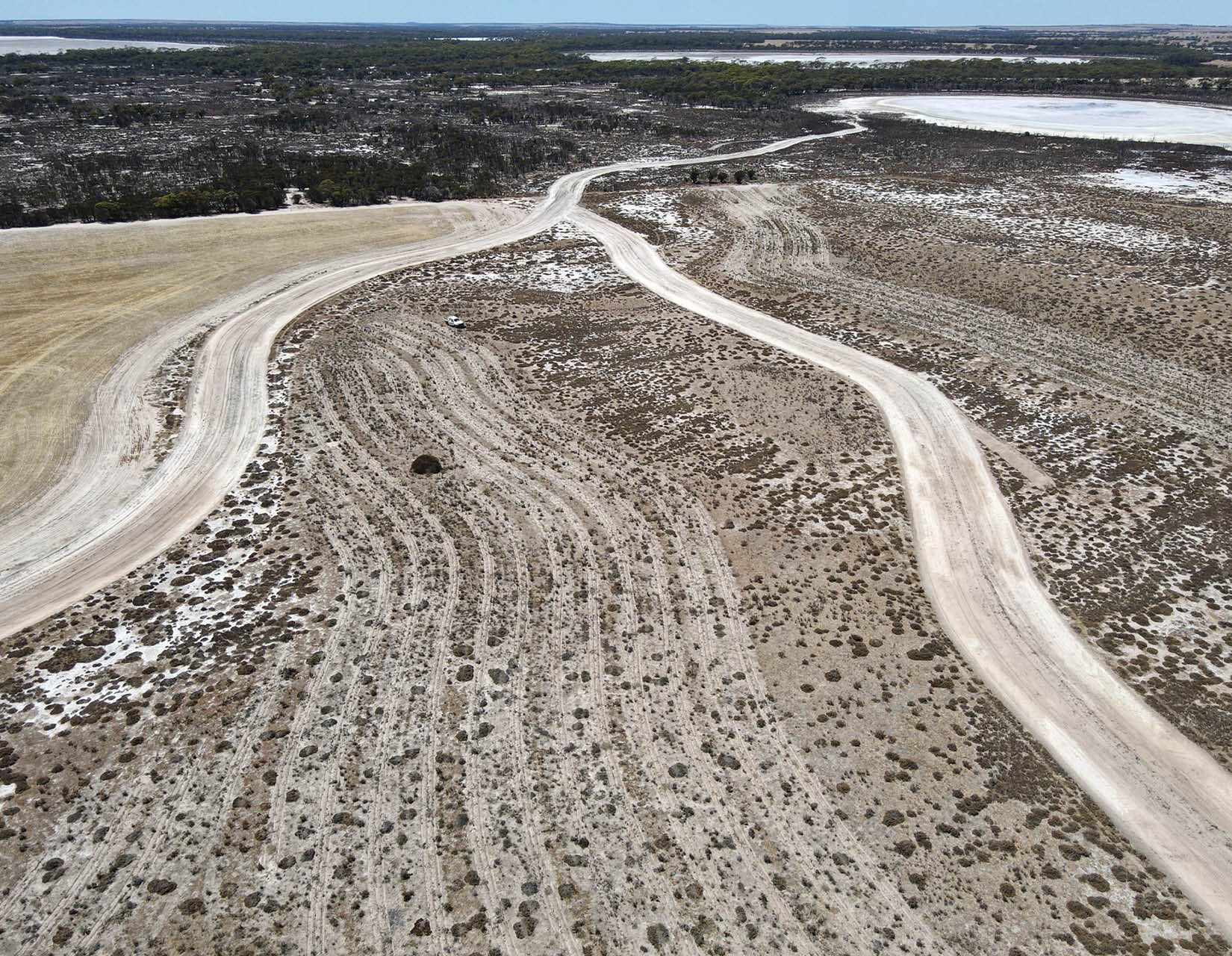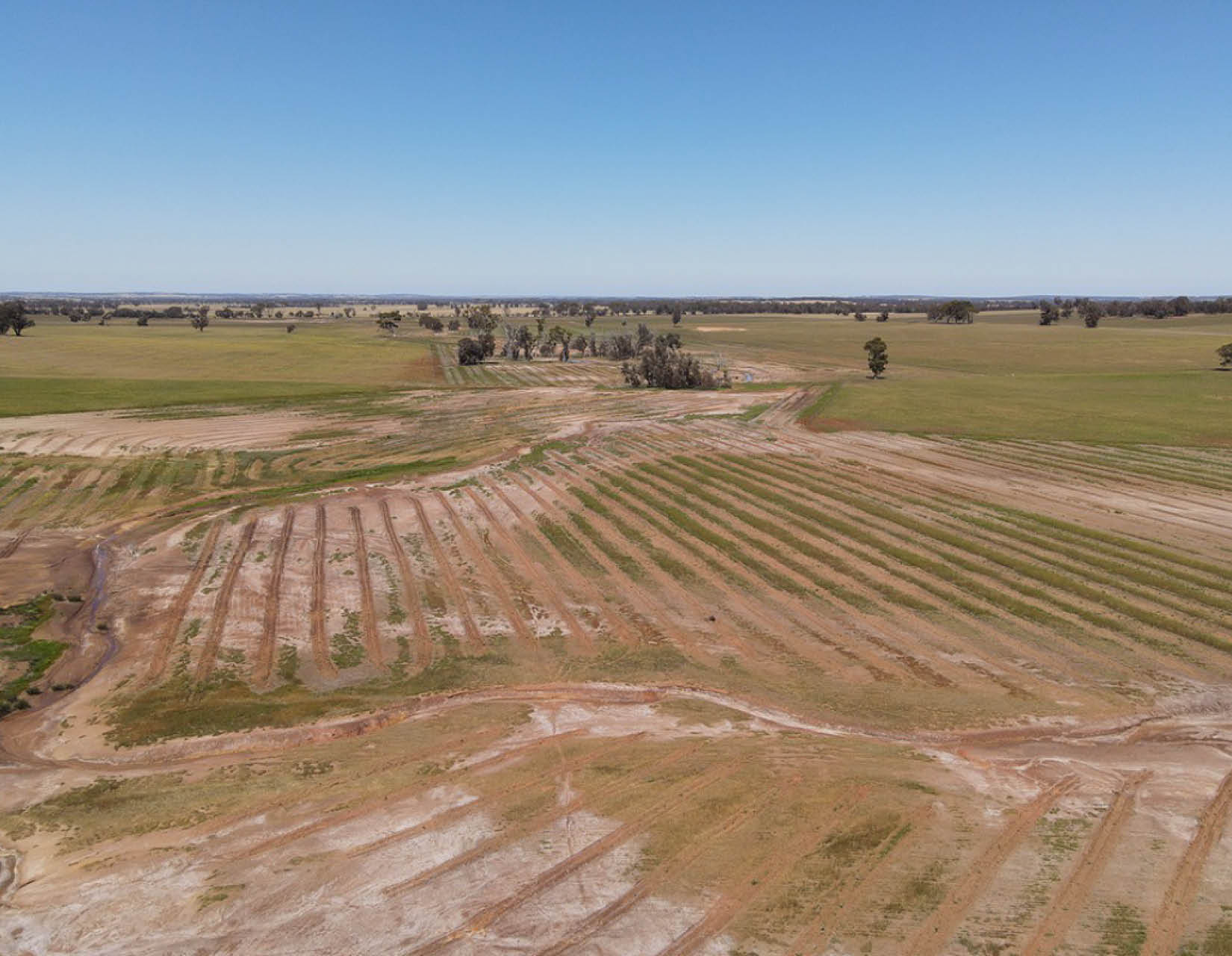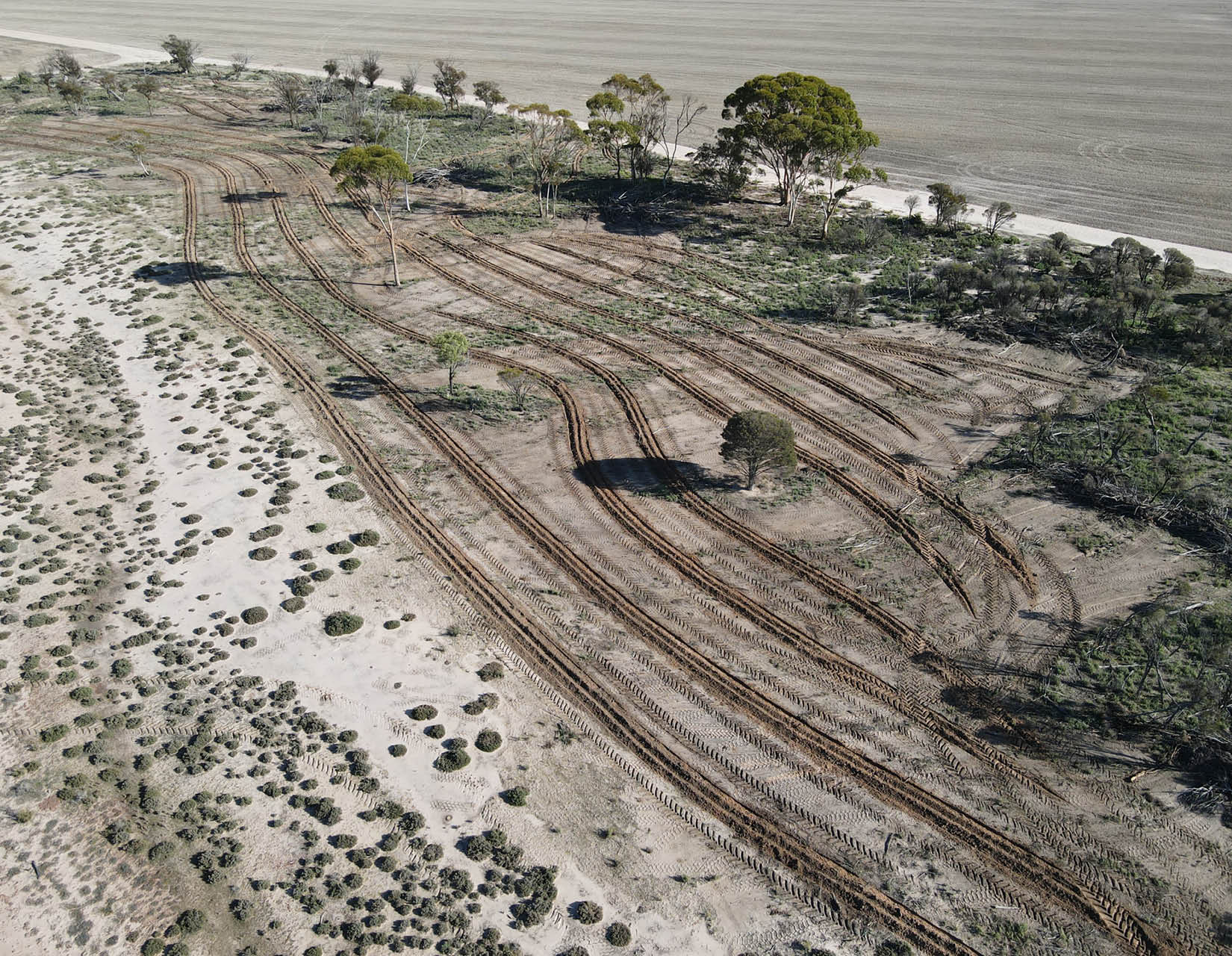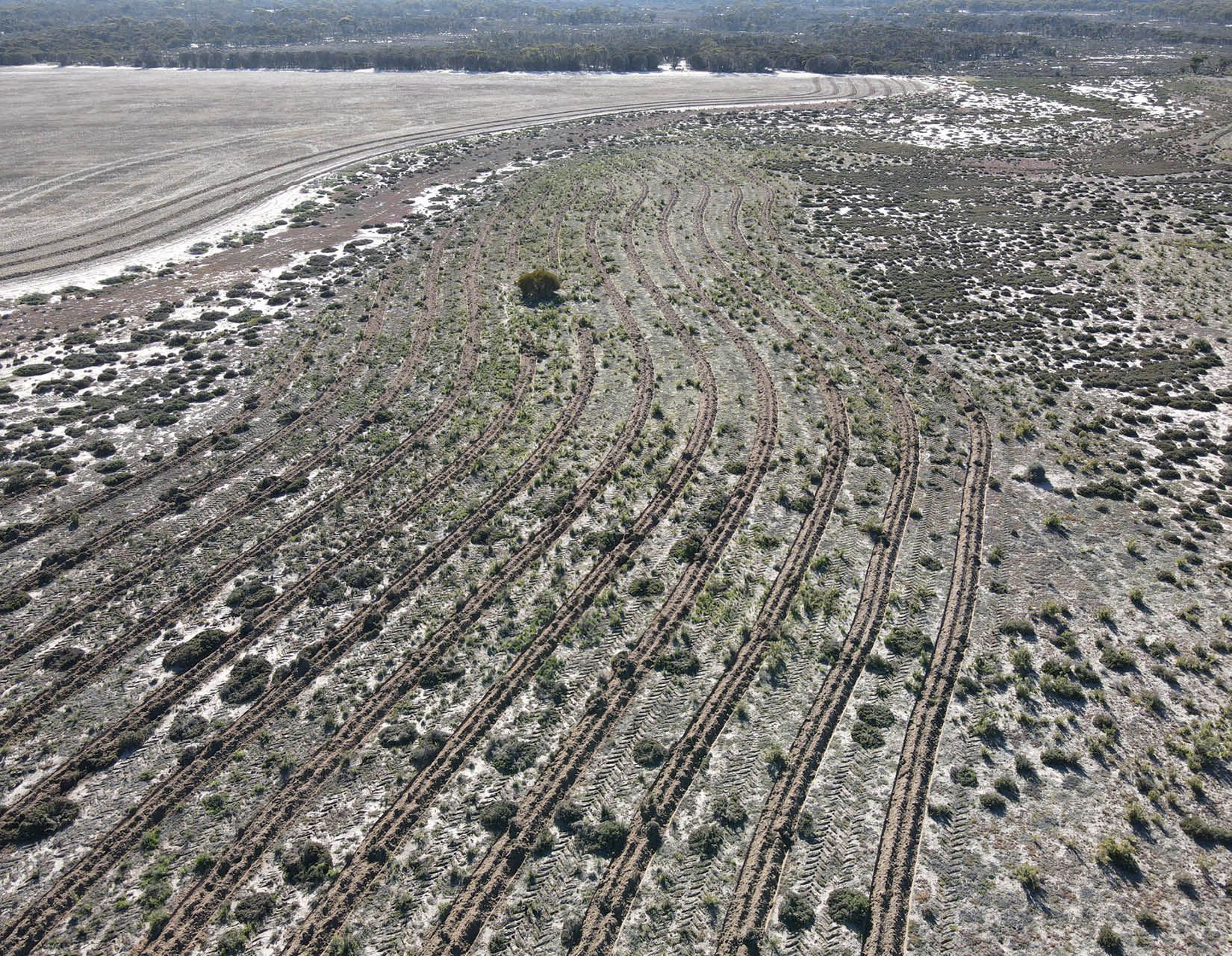Wheatbelt Salinity
What is dryland salinity?
Over clearing means that remnant vegetation is not available to soak up water both from the rainfall and sub soil. In poorly draining soils water runs off to the lowest point to where waterlogging occurs.
Waterlogging causes salinity. When water stops due to a natural or man-made barriers the fresh water evaporates leaving salt residues behind. This residue inhibits the growth of grasses and vegetation, so the site remains bare.
In WA, the flat terrain, poor drainage, varied soil types and geological barriers below the soil surface all exaggerate salinity. Solutions are wide and varied. Deep and surface drainage, strategic block planting both upslope and along valley floors and fodder reserves. A combination of these solutions will help halt and contain the spread of dryland salinity.
Fighting salinity
PALS adopt a very realistic approach to the fight against salinity. Salinity is a huge issue and sometimes unless approached on a catchment scale individual projects wont necessary reduce the rising watertables. However, integrating fodder to poor soil types which have been affected by salinity enables these soils to be brought back into production using fodder shrubs.
With over 35 year’s experience in the Wheatbelt implementing salinity programs we have seen salt affected land become productive.
Case Study 1
Incorporating fodder crops as tool to combat salinity.
Solution : Alley format
Beacon NE central wheatbelt, West Australia
Problem:
A NE central wheatbelt wheat and sheep farmer had a 120 ha paddock that was showing signs of a rising watertable. The paddock was cropped regularly but the yields were decreasing as the salinity levels increased. Across the paddock there were good soil types which produced average crops but he was losing money over the whole paddock.
Solution:
Alley farming was recommended, that is the planting of dense belts of saltbush. The area was pegged out so that the alleys could accommodate two widths of his boomspray. Eight (8) rows of saltbush was planted tightly together to provide a fodder reserve, in between these block it is envisaged that initially barley will be sown but as the watertable reduces other crops will be sown.
Outcome:
After only two years the paddock is showing signs of recovery. Although the alleys haven’t yet been cropped the increase feed value from grazing is paying dividends.
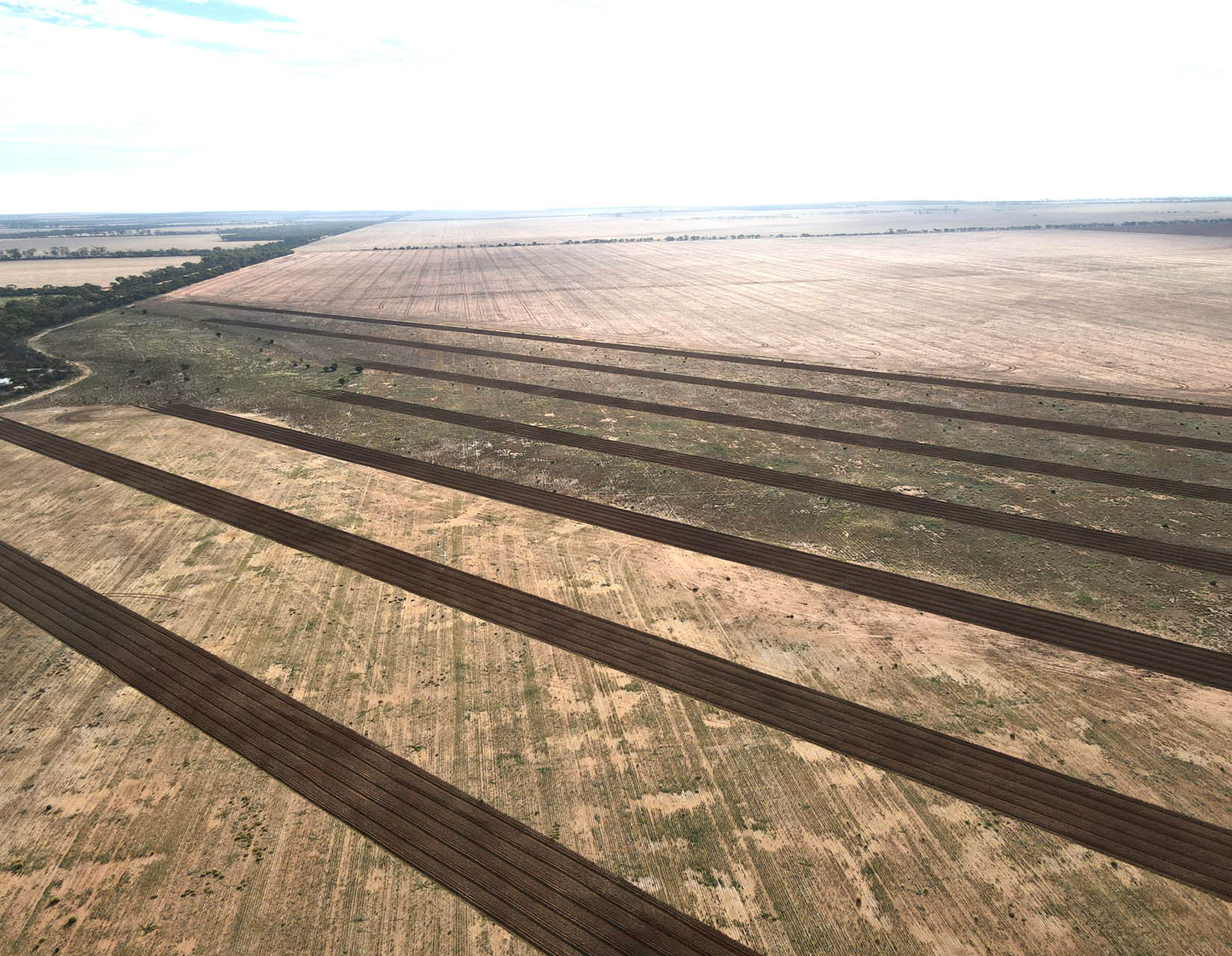
Each alley of saltbush are two boom spray widths apart. Eight rows of saltbush were planted to help absorb sub soil moisture and add substantial feed value to the paddock. This allows stocking rates to be increased for a longer period and ultimately increases the overall profitability of the paddock.
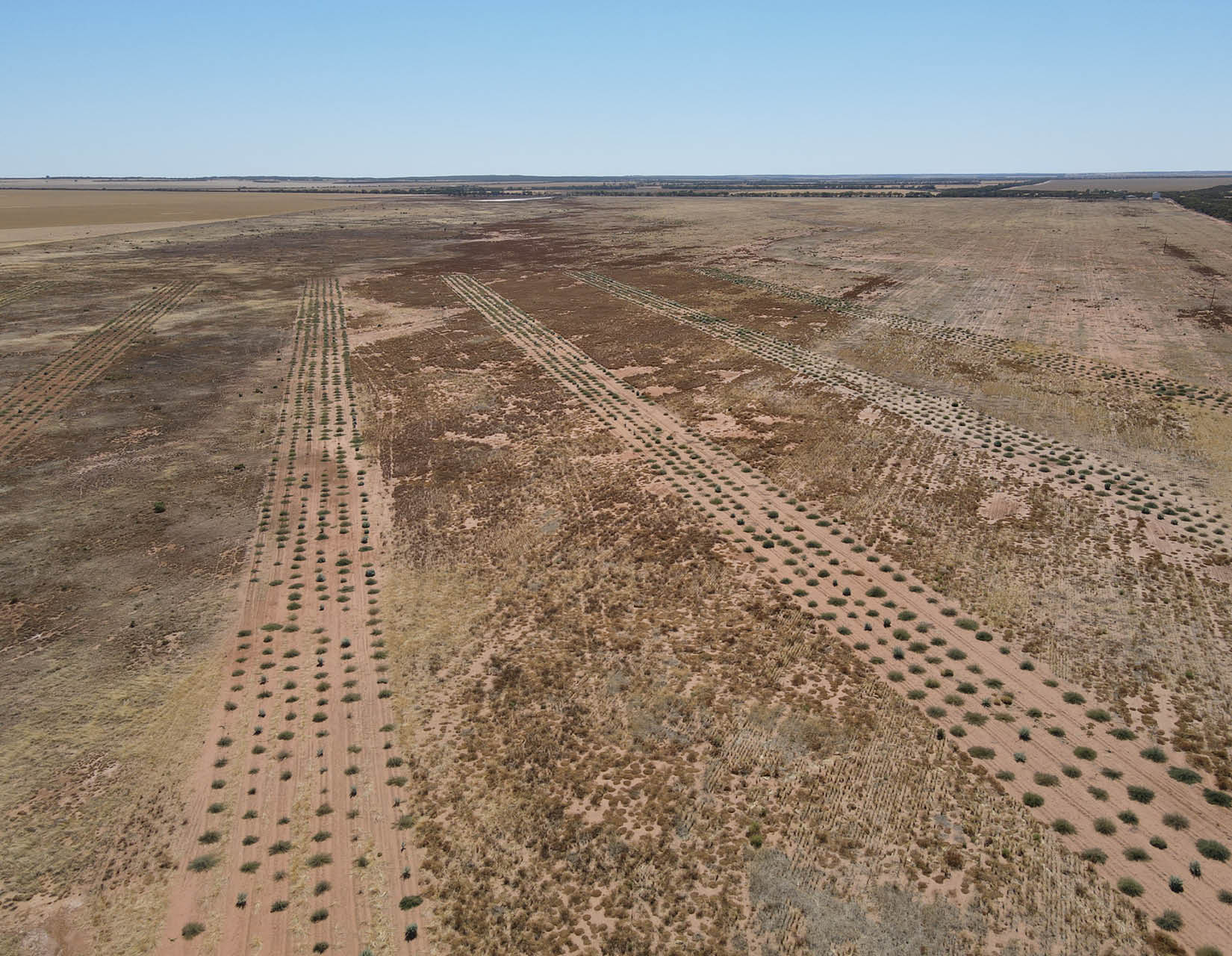
Each alley of saltbush are two boom spray widths apart. Eight rows of saltbush were planted to help absorb sub soil moisture and add substantial feed value to the paddock. This allows stocking rates to be increased for a longer period and ultimately increases the overall profitability of the paddock.
Case Study 2
Bio diverse planting incorporating fodder
Solution: Block Planting
Narrogin West Australia
Problem:
This creekline and surrounding areas were showing signs of salinity. Barley grass, bare wet spots, poor pasture composition and poor crop yields made the area unprofitable – typical of wheatbelt creekline salinity.
Solution:
On the better soil types across the valley floor was planted to salt tolerant trees and shrubs, long-term tool to combat rising watertables. Their root systems will help check the rising water tables and spread of salinity up slope.
On the low-lying areas saltbush fodder shrubs were planted. This will add feed value to the whole creekline. The client will be able to open up the creekline for light grazing once the trees are mature enough (2-3 years).
Implementation of strategic directional surface and well-planned deep drainage will also helped reduce the effect of waterlogging and reduce salinity.
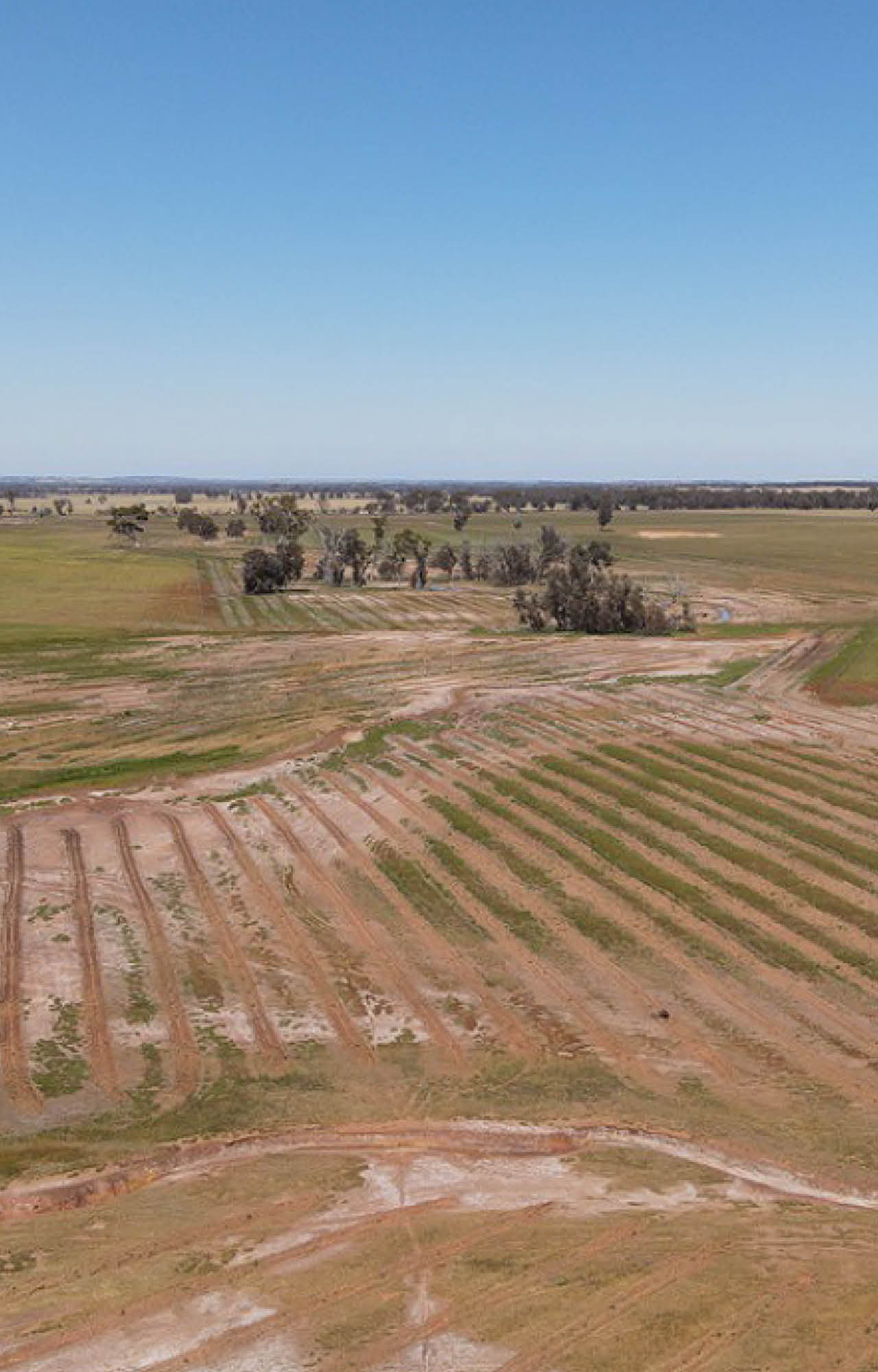
To halt the spreading salinity and waterlogging into the paddocks, dense blocks of trees were planted either side of the creek line.
Case Study 3
As soon as sub soil water is hindered the evidence of water logging accelerates
Solution: Drainage
Kojonup West Australia
Problem:
This creekline had been deteriorating over a long period. The main reason is that the water had been obstructed by a road that bisected the creek line hindering the flow of water but also the water was meandering via numerous channels down to culvert under the road.
Solution:
Long term deep drainage in conjunction with strategic planting will help reduce the spread of salinity but more so help centralise the flow of water.
Drainage needs to be carefully planned with permission from all neighbours and authorities if water is redirected from one property to another.
Drainage cuts into the lower sub soils and allows this water to travel in a direct route to either a river or lake system. Often rock dykes, change in soil types and man-made objectives (tracks and roads) hinder this movement.
After construction on going maintenance of the drain is essential to prevent silting up of the drains and maintain that flow of water.
A deep primary drain was constructed. From here secondary drains were herring-boned into the primary drains picking up the fingers of salt affected zones. The key principle is to ensure the water keeps moving.
Block planting around these secondary drains helped reduce waterlogging and the spread of salinity up slope PALS will help with the concept design and assist where necessary with the overall process.
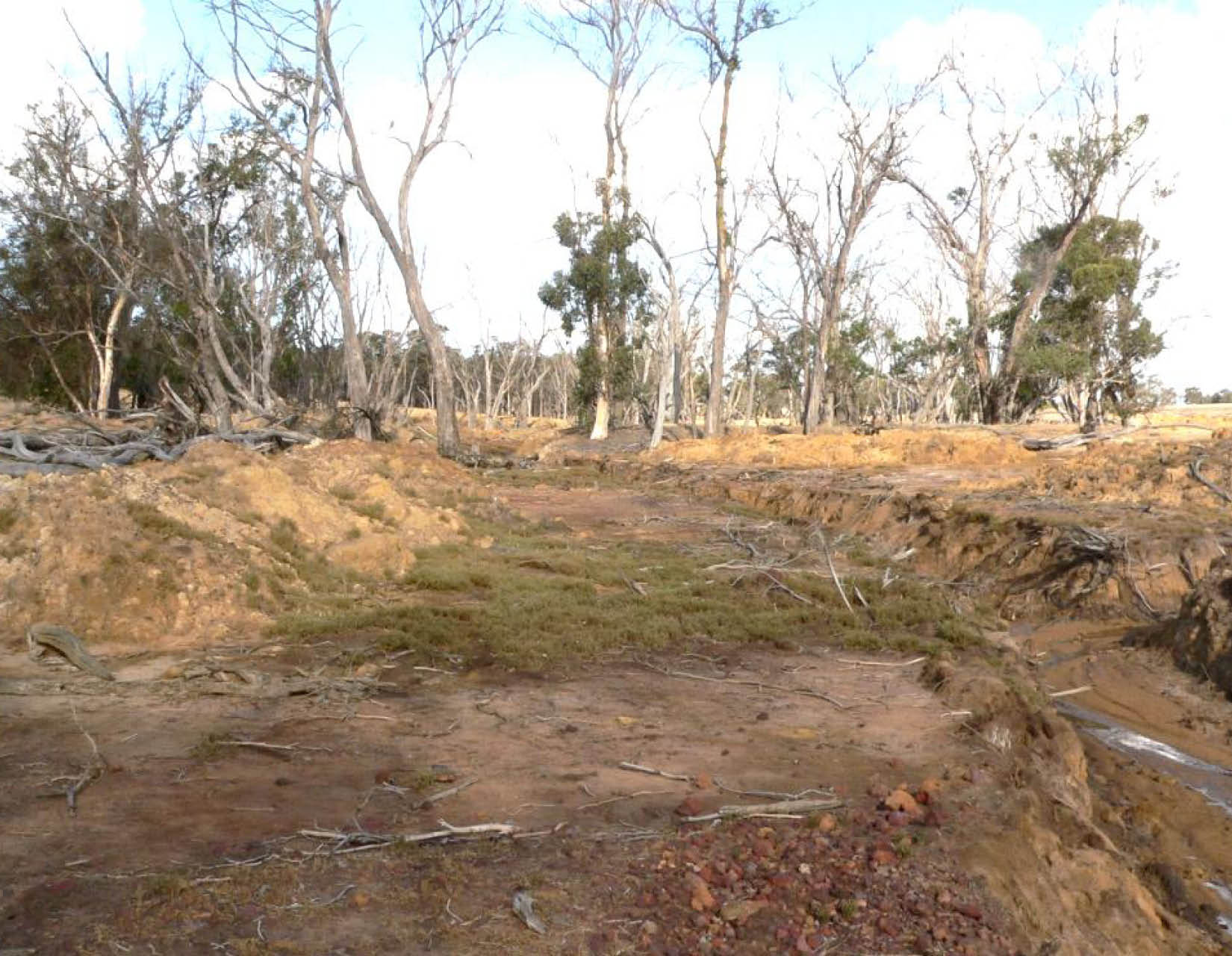
YEAR 1
Deep drainage was constructed through this valley floor. Rising salt water has caused most of the valley floor vegetation to perish
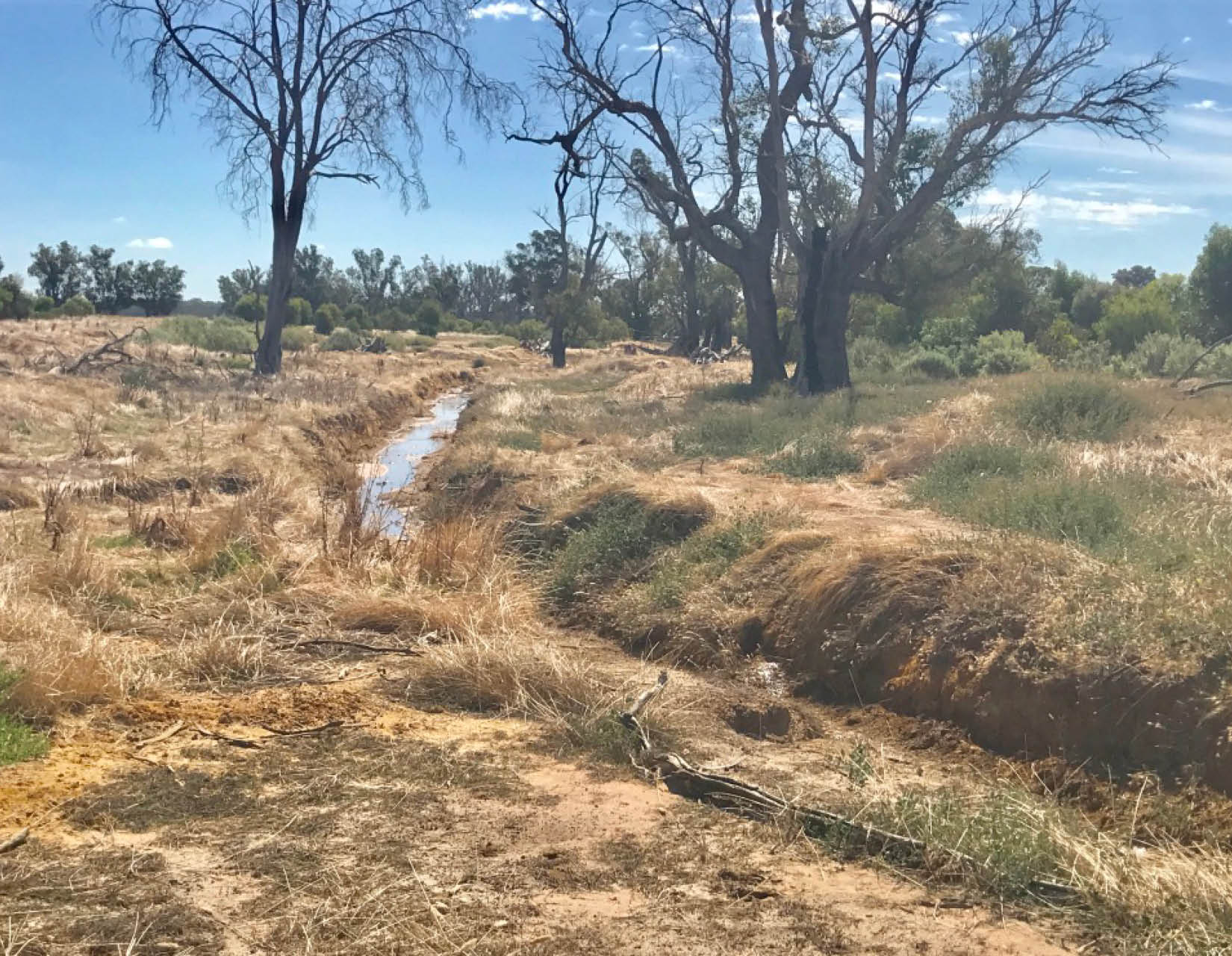
3 YEARS AFTER PLANTING
Deep drainage in conjunction with block planting of trees has enabled grasses to return along with pioneer grass species
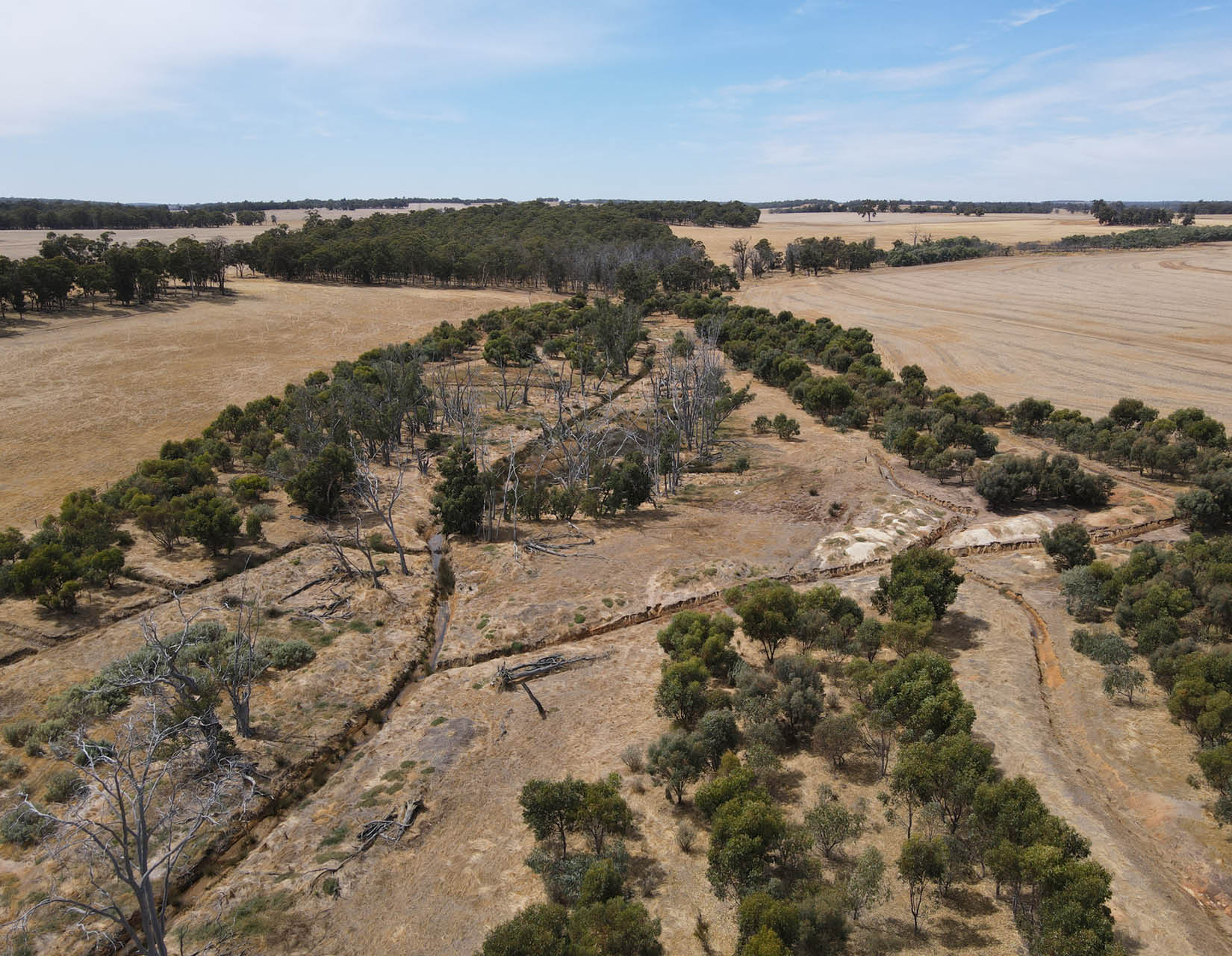
SIX YEARS AFTER PLANTING
The trees and draining are combining to stop the spread of salt

